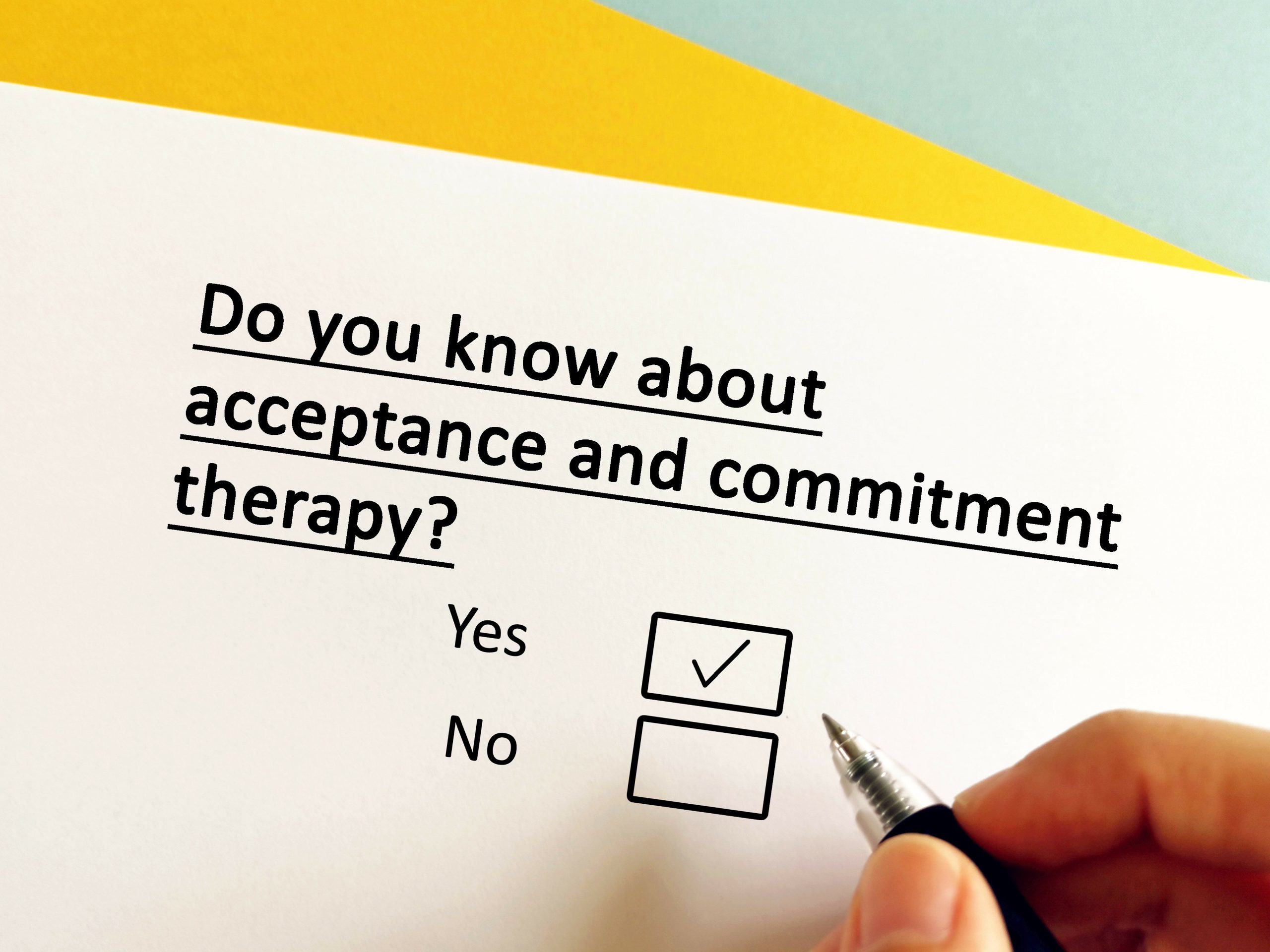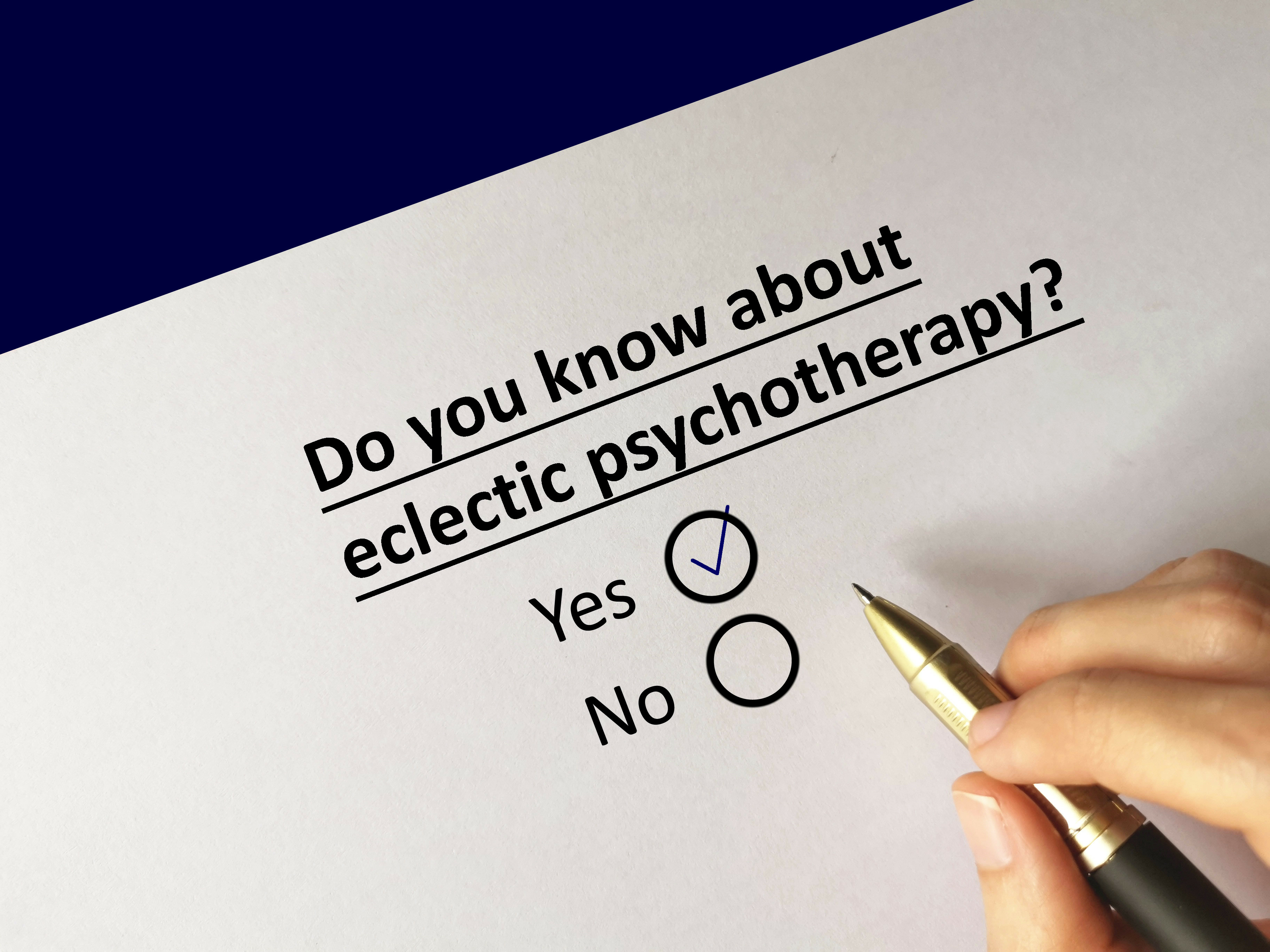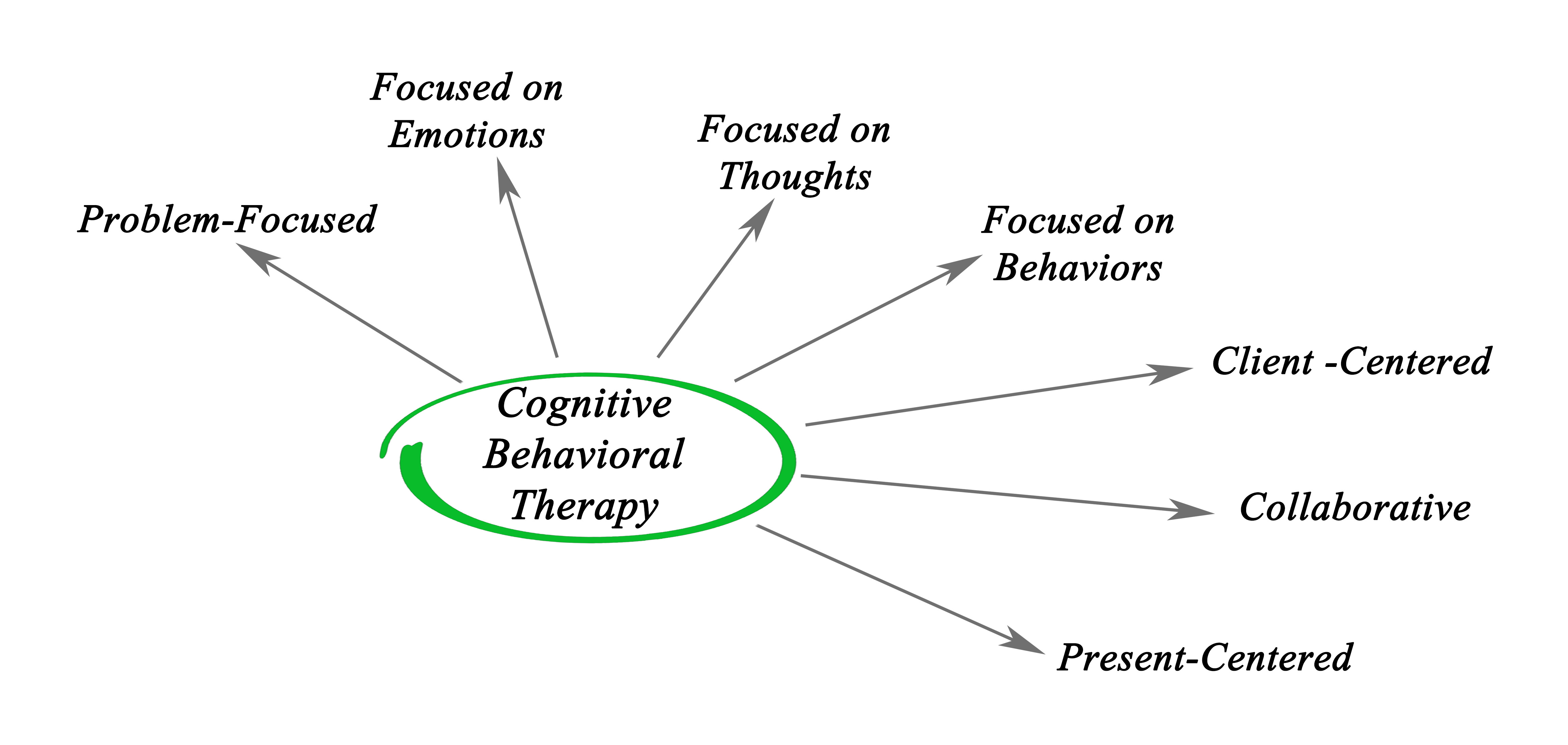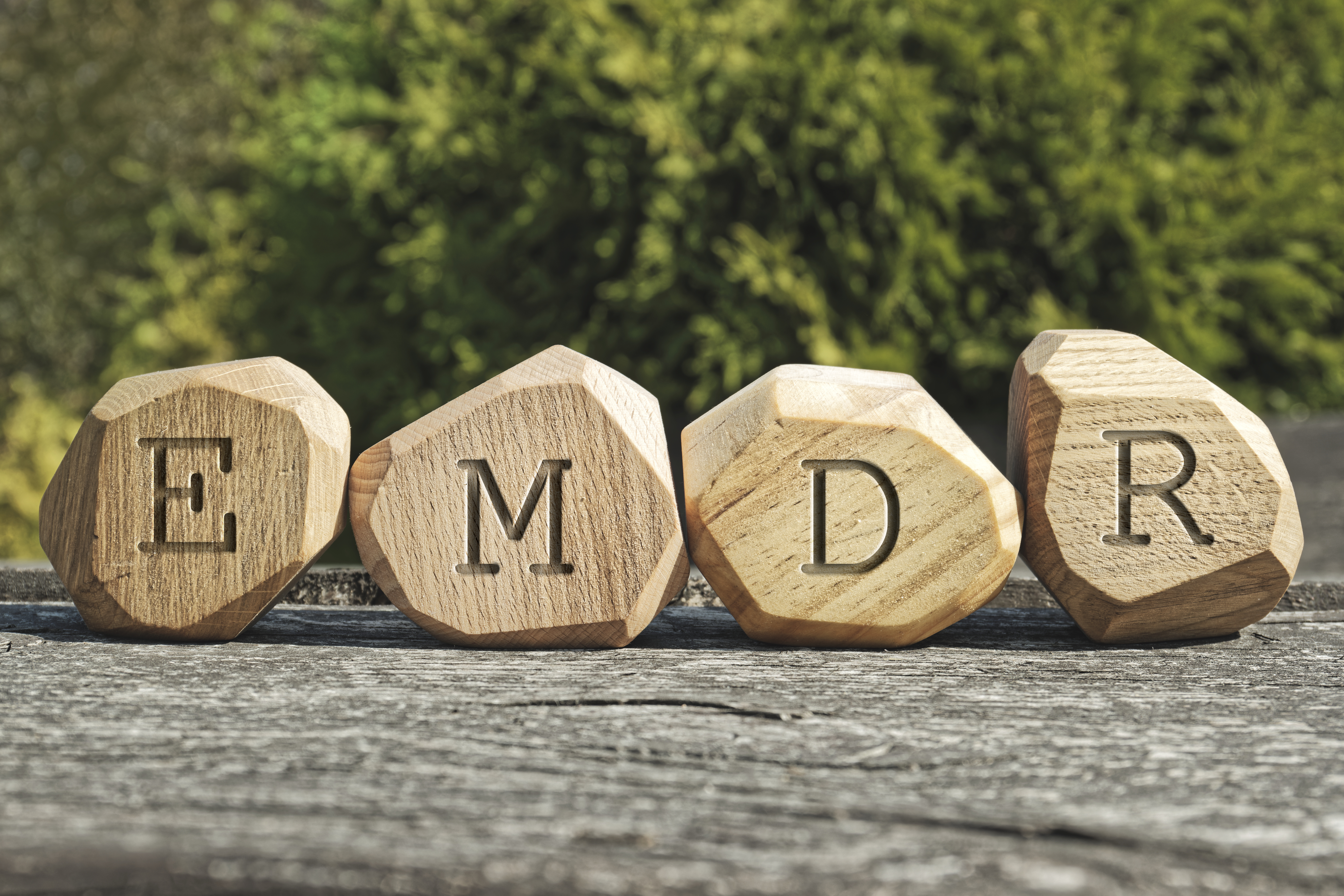Therapies
Psychotherapies are first-line treatments for PTSD. They include cognitive behavioural therapy (CBT), cognitive and exposure therapies, and eye movement desensitization and reprocessing (EMDR), among other therapies. Click on the tabs below to access the evidence or navigate through the topics via the drop-down menu on the left.
Image: ©freshidea – stock.adobe.com

Acceptance and commitment therapy
We have not found any systematic reviews on this topic that meet the Library’s inclusion criteria. Pending enough primary studies, we invite reviews on this topic to be conducted. Alternatively we will endeavour to conduct our own review to fill this gap in the Library. October 2021 Image: ©Richelle – stock.adobe.com

All psychological therapies for PTSD
What is psychotherapy for PTSD? Treatment guidelines typically recommend psychological treatments as first-line treatment for PTSD. Cognitive behavioural therapy (CBT) is one of the most common psychological treatments. CBT challenges distorted, negative thinking patterns associated with the trauma to help people develop more adaptive cognitions and behaviours. It also assists people to rethink assumptions and reactions to the event. Exposure therapies aim to desensitise people to trauma-related memories. This helps overcome symptoms by exposure to specific or non-specific cues or memories related to the trauma. Eye movement desensitisation and reprocessing (EMDR) involves the patient focussing on a disturbing image, memory,…

Animal-assisted psychotherapy
What is animal-assisted psychotherapy for PTSD? Animal-assisted psychotherapy is a goal-directed intervention involving an animal as part of the treatment process. It is usually delivered by a health service professional with specialised expertise and is designed to improve mental and physical health. Studies have shown that being around animals can decrease blood pressure, physiological arousal, and cardiopulmonary pressure. It may also improve trauma symptoms. What is the evidence for animal-assisted psychotherapy? Moderate to low quality evidence found a large improvement in PTSD, depression, and anxiety symptoms with animal-assisted therapy (pre-post analysis, mostly utilising group sessions with horses). The effect was…

Brief eclectic psychotherapy
We have not found any systematic reviews on this topic that meet the Library’s inclusion criteria. Pending enough primary studies, we invite reviews on this topic to be conducted. Alternatively we will endeavour to conduct our own review to fill this gap in the Library. August 2021 Image: ©Richelle – stock.adobe.com

Cognitive behavioural therapy
What is cognitive behavioural therapy (CBT) for PTSD? CBT is one of the most common psychological treatments for mental disorders. CBT covers a range of therapies including the core components of cognitive restructuring and/or a behavioural therapy. It can also include exposure therapy, and newer therapies such as acceptance and commitment therapy and metacognitive therapy. For PTSD, CBT challenges distorted, negative thinking patterns associated with the trauma. This helps people develop more adaptive cognitions and behaviours, and to rethink assumptions and reactions to the event. What is the evidence for CBT for PTSD? Moderate quality evidence found between 53% and…

Cognitive therapies
What are cognitive therapies for PTSD? Cognitive therapies are based on the theory that an individual’s perception of a situation influences his or her emotional response to it. They aim to help people identify distorted thinking and to modify existing beliefs. Cognitive processing therapy is a type of cognitive therapy that involves psychoeducation, written accounts about the traumatic event, and cognitive restructuring to address beliefs about the event’s meaning and its implications. Cognitive restructuring aims to facilitate relearning thoughts and beliefs generated from a traumatic event. This increases awareness of dysfunctional trauma-related thoughts, and corrects or replaces those thoughts with…

Creative arts therapy
What is creative arts therapy for PTSD? Creative arts therapy allows thoughts and feelings about trauma to be expressed non-verbally. Visual and musical artistic expressions, as well as the body itself, are used to recall the traumatic memory and to symbolise the pain and suffering resulting from trauma. Proposed mechanisms by which creative art therapies may improve PTSD include relaxation, expression of memories and emotions that are difficult to put into words, containment of traumatic material within a creative art product may provide a sense of control, symbolic expression may make progressive exposure more tolerable, and creation may build self-esteem…

Emotion-focussed therapies
We have not found any systematic reviews on this topic that meet the Library’s inclusion criteria. Pending enough primary studies, we invite reviews on this topic to be conducted. Alternatively we will endeavour to conduct our own review to fill this gap in the Library. October 2021 Image: ©2021 – Tadeusz Marx – stock.adobe.com

Emotional freedom techniques
What are emotional freedom techniques for PTSD? Emotional freedom techniques use established exposure methods and cognitive processing, along with stimulation of acupoints. During treatment, the client remembers a traumatic memory or emotional trigger and pairs it with cognitive reframing while tapping, holding, or massaging a set of acupoints. The tapping may help access the body’s energy and send signals to the part of the brain that controls stress. Rounds of mental exposure, cognitive processing, and acupoint stimulation are repeated until the client can bring the memory to mind with little or no subjective distress. What is the evidence for emotional…

Exposure therapies
What are exposure therapies for PTSD? Exposure therapies help people confront their fear in a safe environment. In vivo exposure involves directly facing a feared object, situation, or activity. Imaginal exposure involves vividly imagining the feared factors, while virtual reality exposure uses technology to imitate the feared factors. Graded exposure involves ranking the feared factors according to difficulty, with the mild factors exposed first. Flooding also uses this hierarchy but begins with the most difficult tasks. Systematic desensitisation combines exposure with relaxation to associate the feared factors with being relaxed. Exposure therapy can help weaken previously learned associations between feared…

Expressive writing
What is expressive writing for PTSD? Expressive writing involves writing about the thoughts and feelings associated with an event. As a therapy, it is called Written Emotional Disclosure or Written Exposure Therapy. People who have experienced a traumatic or stressful life event are more likely to avoid thoughts and feelings related to their experience than people who have not experienced such events. Writing about these events in a therapeutic environment allows the therapist to focus on the client’s experiences while writing about the trauma, rather than the event itself. What is the evidence for expressive writing? Moderate to low quality…

Eye movement desensitization and reprocessing
What is eye movement desensitization and reprocessing (EMDR) for PTSD? EMDR is based on the observation that the intensity of traumatic memories can be reduced through eye movements. While patients focus on a traumatic memory or thought, they simultaneously move their eyes back and forth, following the movement of the therapist’s finger. The vividness and intensity of the memory can be reduced when its is activated while the patient focusses on the finger movements. This diluted memory is then stored in the long-term memory, leading to less emotional reaction at future activation. What is the evidence for EMDR for PTSD?…

Family therapies
What are family therapies for PTSD? PTSD avoidance symptoms can reduce involvement in family activities, while symptoms of emotional numbing can inhibit self-disclosure and intimacy. Hyperarousal symptoms are linked to irritability and anger and can also precipitate aggression and family conflict. Therefore, several couple and family therapies for PTSD have been developed. These are mostly based on cognitive-behavioural models and attachment theory. Interventions that enhance relationship and communication skills equip families to better manage interpersonal difficulties. They also facilitate self-disclosure and related experiences of intimacy. Therapies that promote understanding of PTSD symptoms and their impact on relationships assist in correcting…

Group therapies
What are group therapies for PTSD? Group therapy refers to any psychosocial therapy that is administered in a group setting. Group therapy offers the opportunity to redevelop trusting relationships, and a sense of interpersonal safety. The experience that others share similar problems helps to validate traumatic experiences and to normalise trauma responses. Trauma-focused groups integrate memories of the trauma into the therapeutic process to modify the meaning of the trauma for the individual, while non-trauma-focused groups concentrate more on the impact of the trauma on current life issues and behaviours. What is the evidence for group therapies for PTSD? Moderate…

Hypnotherapy
What is hypnotherapy for PTSD? Hypnosis may be experienced as an altered state of consciousness or as a state of relaxation. There is no agreed framework for administering hypnosis, but the procedure often involves induction (such as eye fixation), muscular and/or breathing relaxation, guided imagery, and orientation to the surroundings. What is the evidence for hypnotherapy for PTSD? Moderate to low quality evidence found a large effect of improved PTSD symptoms following treatment with hypnotherapy compared to control conditions. These effects were maintained for up to 4 weeks. August 2021 Image: ©Igor Normann – Fotolia – stock.adobe.com

ICU diaries
What are ICU diaries for PTSD? Patients in intensive care units (ICUs) frequently experience memory loss and recall of unpleasant experiences after discharge. These may be associated with symptoms of anxiety, depression, and post-traumatic stress disorder. The use of ICU diaries is a way for the patient to realise what happened during their ICU stay and to help them understand the chain of events. What is the evidence for ICU diaries? Moderate to high quality evidence found no significant differences in the rates of PTSD following discharge from ICUs in people receiving ICU diaries and those not receiving ICU diaries….

Imagery rehearsal therapy
What is imagery rehearsal therapy for PTSD? Imagery rehearsal therapy is a commonly used cognitive-behavioural intervention for post-traumatic nightmares. The basic components include sleep education, a dream narrative that includes a change to some aspect of the nightmare, and imaginal rehearsal of the new dream narrative. Some imagery rehearsal therapies also include exposure components, such as reading the written account aloud to the therapist and/or therapy group members. Some also include components of cognitive-behavioural therapy such as sleep restriction, stimulus control, and sleep hygiene. What is the evidence for imagery rehearsal therapy? Moderate quality evidence found medium to large effects…

Interpersonal psychotherapy
What is interpersonal psychotherapy for PTSD? Traumatic events may disrupt attachments and lead to gradual distancing and avoidance of interpersonal triggers, along with social detachment, emotional negativity, and anger. Interpersonal psychotherapy involves psychoeducation, focussing on factors such as grief, the role of dispute, the role of transition, and interpersonal functioning. The therapy helps patients to understand their response to the emotions that arise from the context of relationships and to use this understanding to strengthen their interpersonal relationships. What is the evidence for interpersonal psychotherapy? Moderate quality evidence found a medium-sized effect of improved PTSD symptoms with interpersonal psychotherapy. The…

Memory specificity training
We have not found any systematic reviews on this topic that meet the Library’s inclusion criteria. Pending enough primary studies, we invite reviews on this topic to be conducted. Alternatively we will endeavour to conduct our own review to fill this gap in the Library. August 2021 Image: ©2018 Andrew Ostrovsky – stock.adobe.com

Metacognitive therapy
We have not found any systematic reviews on this topic that meet the Library’s inclusion criteria. Pending enough primary studies, we invite reviews on this topic to be conducted. Alternatively we will endeavour to conduct our own review to fill this gap in the Library. October 2021 Image: ©Heather – stock.adobe.com

Mindfulness and meditation
What is mindfulness and meditation for PTSD? Meditation has elements of exposure, cognitive change, attentional control, self-management, relaxation, and acceptance, all of which are relevant to PTSD. Mindfulness meditation teaches participants to orient their attention to the present with curiosity, openness, and acceptance. It uses monitoring to attend to sensations, emotions, and thoughts as they enter awareness. Experiencing the present non-judgmentally and openly may encourage people to approach rather than avoid distressing thoughts and feelings, which may reduce cognitive distortions and avoidance. Present-orientation also avoids excessive orientation toward the past or future, which may reduce worry and rumination. What is…

Narrative exposure therapy
What is narrative exposure therapy for PTSD? Narrative exposure therapy was developed for use in the management of multiple traumas. Trauma memories are usually not a snapshot of the event but are part of an entangled system related to the event and the meaning and emotion associated with it. Narrative exposure therapy facilitates the process of converting fragmented trauma-related autobiographic memories into a coherent narrative. The result is a remodelling of behavioural, cognitive, and emotional responses to thoughts or cues related to the event and to perceive the event and react to its memory in a less distressing manner. What…

Present-centred therapy
What is present-centred therapy for PTSD? Present-centred therapy is a non-trauma-based treatment that may appeal to patients reluctant to engage in trauma-focussed treatments. Present-centred therapy aims to establish positive interpersonal connections through the therapeutic relationship, normalisation of symptoms, validation of experiences, provision of emotional support, and increased sense of mastery and self-confidence in dealing with problems. Patients gain insight into how behaviours are influenced by symptoms, they explore adaptive solutions to these problems, and are encouraged to implement their chosen solutions. Through the application and practice of more effective solutions to daily stressors, patients experience enhanced psychosocial functioning and decreased…

Psychoeducation
We have not found any systematic reviews on this topic that meet the Library’s inclusion criteria. Pending enough primary studies, we invite reviews on this topic to be conducted. Alternatively we will endeavour to conduct our own review to fill this gap in the Library. October 2021 Image: ©debr22pics – Fotolia – stock.adobe.com

Self-help treatment
What is self-help treatment for PTSD? Self-help treatment is offered through written manuals or books, but several internet and computer-based self-help programs have now been developed. Self-help programs use a standardised psychological treatment protocol comprising guidance for applying the treatment. The protocol is typically composed of relevant information, explanations, and exercises. The patients do most of the intervention on their own, with contact with a therapist being either non-existent or minimal and only facilitative or supportive in nature. What is the evidence for self-help treatment for PTSD? Moderate to high quality evidence found a medium-sized improvement in PTSD symptoms with…

Stress inoculation training
We have not found any systematic reviews on this topic that meet the Library’s inclusion criteria. Pending enough primary studies, we invite reviews on this topic to be conducted. Alternatively we will endeavour to conduct our own review to fill this gap in the Library. August 2021 Image: ©grafikplusfoto – Fotolia – stock.adobe.com

Stress management
What is stress management for PTSD? Stress management is a broad term for interventions that mainly involve relaxation. These use imagery, biofeedback, muscle relaxation, and breathing exercises to assist the individual to manage their stress related to the traumatic event. In most clinical trials, stress management is used as a control condition. What is the evidence for stress management? Moderate quality evidence found a medium-sized improvement in PTSD symptoms with stress management compared to waitlist/no treatment. However, stress management was less effective for symptoms than cognitive therapies, exposure therapies, cognitive behavioural therapies, and eye movement desensitisation and reprocessing. There were no differences in symptoms…

Structured approach therapy
We have not found any systematic reviews on this topic that meet the Library’s inclusion criteria. Pending enough primary studies, we invite reviews on this topic to be conducted. Alternatively we will endeavour to conduct our own review to fill this gap in the Library. August 2021 Image: ©ASDF – stock.adobe.com

Supportive counselling
What is supportive counselling for PTSD? Supportive counselling is a broad term for interventions that aim to relieve the intensity of symptoms, distress, and disability. It is designed to allow a person to voice their concerns and receive encouragement and help in finding practical solutions. In most clinical trials, supportive counselling is used as a control condition. What is the evidence for supportive counselling? Moderate quality evidence found a medium-sized improvement in PTSD symptoms with supportive counselling compared to waitlist/no treatment. However, supportive counselling was less effective for symptoms than cognitive therapies, exposure therapies, cognitive behavioural therapies, and eye movement…

Telemental health
What is telemental health for PTSD? There is a growing need to deliver low-cost treatments tailored to individual needs and delivered in a continuous way from any location. Telemental health (or “ehealth”) has the potential to meet this need for people with PTSD. Telemental health refers to any mental health treatment that is provided electronically, either by telephone or internet (such as online health programs, or video conferencing). This type of intervention involves structured counselling and generally aims to increase medication adherence and prevent relapse. Importantly, it also removes geographic barriers to care. This topic includes apps for PTSD and…

Trauma affect regulation
We have not found any systematic reviews on this topic that meet the Library’s inclusion criteria. Pending enough primary studies, we invite reviews on this topic to be conducted. Alternatively we will endeavour to conduct our own review to fill this gap in the Library. August 2021 Image: ©fizkes – stock.adobe.com
Green - Topic summary is available.
Orange - Topic summary is being compiled.
Red - Topic summary has no current systematic review available.
